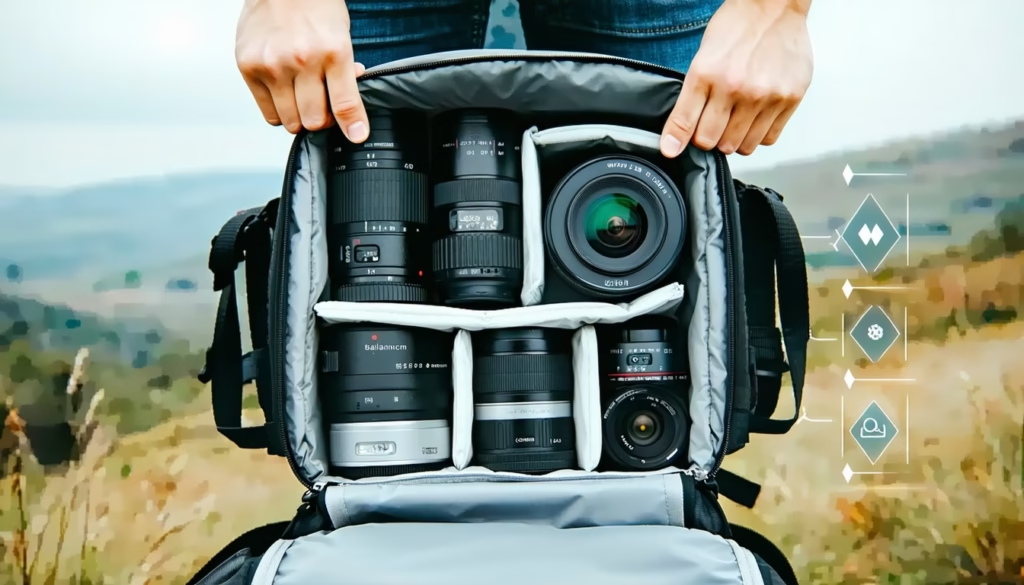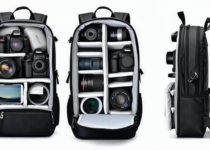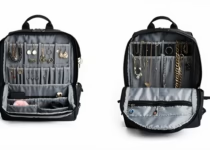How To Balance Weight In A Camera Backpack

Ever slung on your camera backpack only to feel it tug sideways or dig into your shoulders? Knowing how to balance weight in a camera backpack can transform your outings, so you’re more comfortable and your gear stays put. In this guide, you’ll learn step by step how to arrange your kit for a snug, strain-free carry.
You’ll get tips on sorting gear, positioning heavy items, tweaking straps, and testing your setup before you hit the trail. Ready to lighten your load? Let’s dive in.
Gather Your Gear
Before packing, lay everything out on a flat surface. Seeing all your kit helps you avoid surprises and overloading.
List Essentials First
- Camera bodies and lenses
- Batteries, chargers, power banks
- Memory cards, filters, cables
- Tripod or monopod
- Personal items (snacks, water, phone)
Tip: If you tend to overpack, check our guide on how to avoid overpacking a camera backpack.
Weigh Each Piece
Grab a small luggage scale or kitchen scale to note each item’s weight. Jot it down. Knowing which lens or accessory pulls the most weight makes it easier to position gear strategically.
Pack Heavier Items Low
Gravity is on your side when you place heavy pieces near the bottom. This keeps your center of gravity low and prevents top-heavy sway.
Use Bottom Compartments
Most camera packs have a base pocket. Slide in big lenses with battery grips attached. If you carry multiple bodies, tuck them here too. Learn more about how to fit multiple camera bodies in one backpack.
Balance Using Batteries And Grips
If a lens with a battery grip tips the scale, offset it by placing a power bank or charger on the opposite side. Small weight shifts can make a big difference.
Distribute Weight Evenly
Once heavy gear sits low, you need side-to-side balance so the pack doesn’t lean on one shoulder.
Balance Left And Right
Compare the left and right halves of your main compartment. If you stack two lenses on the left, mirror that setup on the right with similarly sized items.
Avoid Front Heavy Loads
Packing too much up front can pull you backward. Keep midweight items like chargers or small lenses in the middle. For quick gear grabs, check the best camera backpack layouts for fast access.
Use Inserts And Dividers
Modular inserts let you shape the interior to your exact kit. They stop items from sliding around and rebalance pockets on the fly.
Adjust Modular Dividers
Slide dividers to create snug cubbies for each lens or body. Tight fits prevent sudden shifts as you walk or bend.
Customize With Inserts
If your pack supports extra inserts, use them to layer lighter items above heavy gear. For detailed steps, see how to customize a camera backpack with inserts. You can also brush up on best ways to organize lenses inside a camera backpack.
Optimize External Attachments
Straps and pockets on the outside are tempting spots for quick storage. But they can throw off your balance if you’re not careful.
Secure Your Tripod
Tripods add length and weight. Use side straps or dedicated mounts to keep the tripod snug against your pack’s frame. Learn how in how to carry a tripod using a camera backpack.
Mind Side Pockets
Side pouches are great for snacks or a water bottle. Stick to light, irregular items here so they don’t dangle or shift and cause sway.
Fine-Tune Strap Adjustments
Your straps tie the whole system together. A well-adjusted harness moves weight to your hips and keeps shoulders happy.
Adjust Shoulder Straps
Pull down evenly on both ends until the pack sits high on your back without lifting your shoulders.
Tighten Sternum Strap
Clip and slide the sternum strap across your chest to stop shoulder straps from slipping outward.
Use Hip Belt
If your pack has a hip belt, wrap it around your hip bones. Transfer up to 90 percent of the load off your shoulders and onto your pelvis.
Test And Adjust Fit
Packing is part art and part science. You need to walk, bend, and tweak until it feels right.
Walk And Evaluate
Put on your pack and stroll around. Notice any spots that rub or pull. If your posture changes, your weight distribution needs a tweak.
Repack For Comfort
Move a heavy lens from one side to the other, or switch small items between side pockets. Even a one-inch shift can improve balance.
Prevent Back Pain
If you still feel strain, read how to prevent back pain when carrying camera gear for more posture and packing tips.
Weight Distribution Chart
| Position | Gear Items | Purpose |
|---|---|---|
| Bottom | Heavy lenses, battery grips, bodies | Low center of gravity and stable base |
| Middle | Chargers, medium lenses, filters | Balance front to back |
| Top | Memory cards, small accessories | Easy reach, keeps weight centered |
| Side Pockets | Snacks, cables, water bottle | Light load without bulk in main compartment |
| External Straps | Tripod, monopod | Keeps core compact, gear secure outside |
FAQs
How Tight Should My Shoulder Straps Be?
Your shoulder straps should be snug enough to hold the pack high against your back without lifting your shoulders. You want a firm fit, not a choke hold.
Can I Balance A Backpack With Multiple Camera Bodies?
Absolutely. Place one body and a heavy lens low and center, then mirror that weight on the opposite side with another body or power bank. Check how to fit multiple camera bodies in one backpack for more ideas.
Where Should I Place My Tripod When Packing?
Secure tripods using side straps or a rear mount. Keep it close to the pack’s frame so it doesn’t swing and affect balance. For detailed tips, see how to carry a tripod using a camera backpack.
Will A Hip Belt Help With Load Distribution?
Yes it will. A hip belt shifts most of the pack’s weight from your shoulders to your hips. Fasten it snugly at your hip bones and you’ll feel the difference right away.
How Often Should I Check My Pack Balance?
Give your setup a quick scan every time you add or remove gear. Small swaps can throw off symmetry, so a 30-second check helps you avoid surprises on the trail.
Can I Carry A Drone And Camera Together Safely?
You can, as long as you separate heavy drone batteries from camera gear and distribute them evenly. For more on combining drone and camera packing, visit tips for packing a drone and camera together safely.
Conclusion
Balancing your camera backpack is all about smart placement, even distribution, and fine-tuning straps. With a little practice you’ll pack faster, carry longer, and keep your gear secure.
Grab your pack, follow these steps, and enjoy a more comfortable shoot. Don’t forget to share your favorite packing hack in the comments below.


